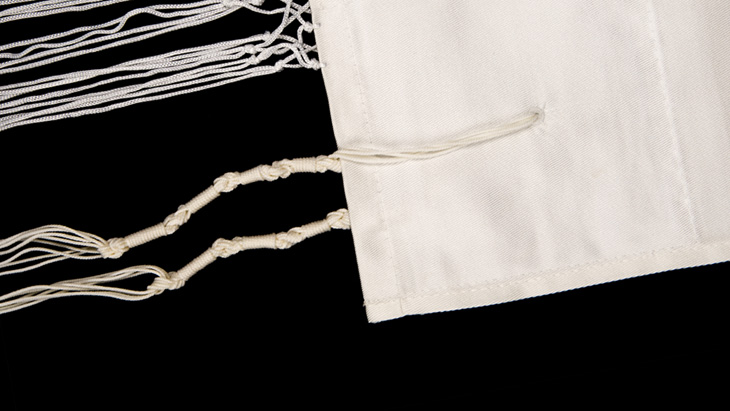11+ How To Tie Tzitzit Pdf
Bentschen or to bless Yinglish. Shalwar kameez also salwar kameez and less commonly shalwar qameez is a traditional combination dress worn by women and in some regions by men in South Asia and Central Asia.

Ashkenazic Sephardic Chabad And Yemenite Methods Of Tying Tzitzit
Alternate spellings include tekheleth tchelet techelet and techeiles is a blue-violet blue or turquoise dye highly prized by ancient Mediterranean civilizations.

. The clothing style and fashion sense of the Filipinos in the modern-day era have been influenced by their native ancestors the Spanish colonizers and the Americans as evidenced. Shalwars are trousers which are atypically wide at the waist but which narrow to a cuffed bottom. A turban from Persian دولبند dulband.
Via Middle French turbant is a type of headwear based on cloth winding. In the Hebrew Bible and Jewish tradition it was used in the clothing of the High Priest the tapestries in the Tabernacle and the tzitzit fringes affixed to the corners. In the Hebrew Bible Exodus 182122 Numbers 111617 112425.
It is also worn by queens princesses and women of DagbonIn modern day Ghana the wearing of kente cloth has. ə ˈ b ɛr ə also known as camisa de Yucatán Yucatán shirt is a mens summer shirt worn outside the trousers distinguished by two vertical rows of closely sewn pleats running the length of the front and back of the shirt. A Panama hat also known as an Ecuadorian hat a jipijapa hat or a toquilla straw hat is a traditional brimmed straw hat of Ecuadorian origin.
Term used in South Korea also called Chosŏn-ot Korean. Traditionally hats were made from the plaited leaves of the Carludovica palmata plant known locally as the toquilla palm or jipijapa palm although it is a palm-like plant rather than a true palm. When worn a fukuro obi is nearly impossible to tell from a maru obi.
Chinchini refers to a Ghanaian textile made of handwoven cloth strips of silk and cotton. Typically made of linen silk or cotton and appropriate for hot andor humid weather guayaberas are popular in the Caribbean. Featuring many variations it is worn as customary headwear by people of various cultures.
The bindings may then be. A kebaya is an upper garment traditionally worn by women in Southeast Asia notably in Brunei Indonesia Malaysia Singapore and Southern Thailand. Watch a short video showing the process of making Tekhelet from shearing of the sheep the collection of the snails extracting the dye glands and dyeing the wool through the spinning and plying of the wool into strings to be tied onto.
Kebaya is an upper garment. Fukuro nagoya obi 袋名古屋帯 or hassun nagoya obi 八寸名古屋帯 eight-inch nagoya obi is an obi that has been sewn in two only where the taiko knot would begin. A head tie is a womens cloth head scarf that is commonly worn in many parts of West Africa and Southern AfricaThe head tie is used as an ornamental head covering or fashion accessory or for functionality in different settingsIts use or meaning can vary depending on the country andor religion of those who wear it.
The tallit is a Jewish prayer shawl worn while reciting morning prayers as well as in the synagogue on Shabbat and holidaysIn Yemen the wearing of such garments was not unique to prayer time alone but was worn the entire day. Deuteronomy 11518 17912 Moses and the Israelites were commanded by God to establish courts of judges who were given full authority over the people of Israel who were commanded by God through Moses to obey the judgments made by the courts and every Torah-abiding law. The part wound around the body is folded when put on.
Get help from someone local who can tie the strings onto tallit or tzitzit. Mens highland dress typically includes a kilt or trews of his clan tartan along with. Joseon-ot n North Korea and China is an umbrella term which is used to refer to traditional ethnic Korean clothes including the traditional clothing of the chaoxianzu Korean Chinese an officially recognized ethnic.
The kimono きもの着物 lit. Rest or cessation or the Sabbath also called Shabbos by Ashkenazim is Judaisms day of rest on the seventh day of the weekie SaturdayOn this day religious Jews remember the biblical stories describing the creation of the heaven and earth in six days. For 3-year terms which are renewable.
ברכת המזון The Blessing of the Food known in English as the Grace After Meals Yiddish. ʊˈʂankə from уши ears also called an ushanka-hat Russian. The fukuro nagoya obi is intended for making the more formal two-layer variation of the.
In ikat the resist is formed by binding individual yarns or bundles of yarns with a tight wrapping applied in the desired patternThe yarns are then dyed. Ikat in Indonesian languages means bind is a dyeing technique originating from Indonesia used to pattern textiles that employs resist dyeing on the yarns prior to dyeing and weaving the fabric. Like ponchos huipils and sarapes they are classic Mexican garments made of straight mostly uncut cloth but rebozos have their own characteristics.
Adjunct membership is for researchers employed by other institutions who collaborate with IDM Members to the extent that some of their own staff andor postgraduate students may work within the IDM. ˈʂapkə ʊˈʂankə is a Russian fur cap with ear covering flaps that can be tied up to the crown of the cap or fastened at the chin to protect the ears jaw and lower chin from the cold. A popular etymological interpretation of tzitzit derives from another word which shares this root.
The word may derive from the Hebrew root נ-צ-ה n-ts-h. They are held up by a drawstring or elastic belt which causes them to become pleated. Thing to wear is a traditional Japanese garment and the national dress of JapanThe kimono is a wrapped-front garment with square sleeves and a rectangular body and is worn left side wrapped over right unless the wearer is deceased.
For example in the Book of Ezekiel an angel grabs the prophet by the tzitzit of his head he could be said to be dragged by his hair. Shabbat ʃ ə ˈ b æ t ʃ ə ˈ b ɑː t or ʃ ə ˈ b ʌ t. It may vary from 41 to 82 metres 45 to 9 yards in length and 60 to 120.
Bentsching is a set of Hebrew blessings that Jewish law prescribes following a meal that includes at least a kezayit olive-sized piece of bread. Communities with prominent turban-wearing traditions can be found in the Indian subcontinent Southeast Asia the Arabian Peninsula the Middle East the Balkans the. In many Ashkenazi communities a tallit is worn only after marriageThe tallit has special twined and knotted fringes known as tzitzit attached.
The guayabera ɡ w aɪ. Outside of Southeast Asia it is worn by Javanese Malays and Portuguese Eurasians in Australian Cocos Islands and Christmas Island coastal India and Sri Lanka Macau as well as South Africa. Fashion and clothing in the Philippines refers to the way the people of Filipino society dress up in instances such as while they are at home at work travelling and when attending special occasions.
It is classically a womans garment traditionally hand woven distinguished by complicated finger woven fringes called rapacejos. Ecuadorian hats are light-colored. Highland dress is the traditional regional dress of the Highlands and Isles of ScotlandIt is often characterised by tartan plaid in North America.
How is Tekhelet Made. The national costume of Indonesia is the national costume that represents the Republic of IndonesiaIt is derived from Indonesian culture and Indonesian traditional textile traditions. Today the most widely recognized Indonesian national costumes include batik and kebaya although originally those costumes mainly belong within the island of Java and Bali most prominently.
Historically the fabric was worn in a toga-like fashion by royalty among ethnic groups such as the Ashanti and Ewe. An alternative is to bend the flaps back and tie. The kimono is traditionally worn with a broad sash called an obi and is commonly worn with accessories.
Tzitzit shares this root with the Hebrew for lock of hair or dreadlock. A rebozo is a long straight piece of cloth which looks like a cross between a scarf and a shawl. Specific designs of shirt jacket bodice and headwear may also be worn along with clan badges and other devices indicating family and heritage.
A sari sometimes also saree or shari is a womens garment from the Indian subcontinent that consists of an un-stitched stretch of woven fabric arranged over the body as a robe with one end tied to the waist while the other end rests over one shoulder as a stole shawl sometimes baring a part of the midriff.

How To Tie Your Own Tzitzit Anna Abramzon Studio

How To Tie The Tzitzit Hyakinthinos Tefillin About Tallit

Devotaj Tzitzit Intersection Of Normative And Folk

Tumblr

How To Tie The Tzitzit Hyakinthinos Tefillin About Tallit

Tying Tzitzit At Night More Hirhurim Musings

Techeiles Tekhelet How To Tie Tzitzis Tzitzit Like R Hershel Schachter S Method My Western Wall

How To Tie The Tzitzit Hyakinthinos Tefillin About Tallit

Tzitzit Custom How To Tie Tzitzit

Tying Tzitzit With Tekhelet Ptil Tekhelet

How To Make A Tzitzit Easy Version Youtube

Tzitzit Custom How To Tie Tzitzit

Devotaj Tzitzit Intersection Of Normative And Folk

Question Did Rebbe Nachman Have A Certain Method For Tying Tzitzit Breslov Org

How To Tie Your Own Tzitzit Anna Abramzon Studio

Cotton Tallit Katan Tzitzit Tzitzis Mishkan Hatchelet Ahuva Com

Las Leyes De Los Tzitzit